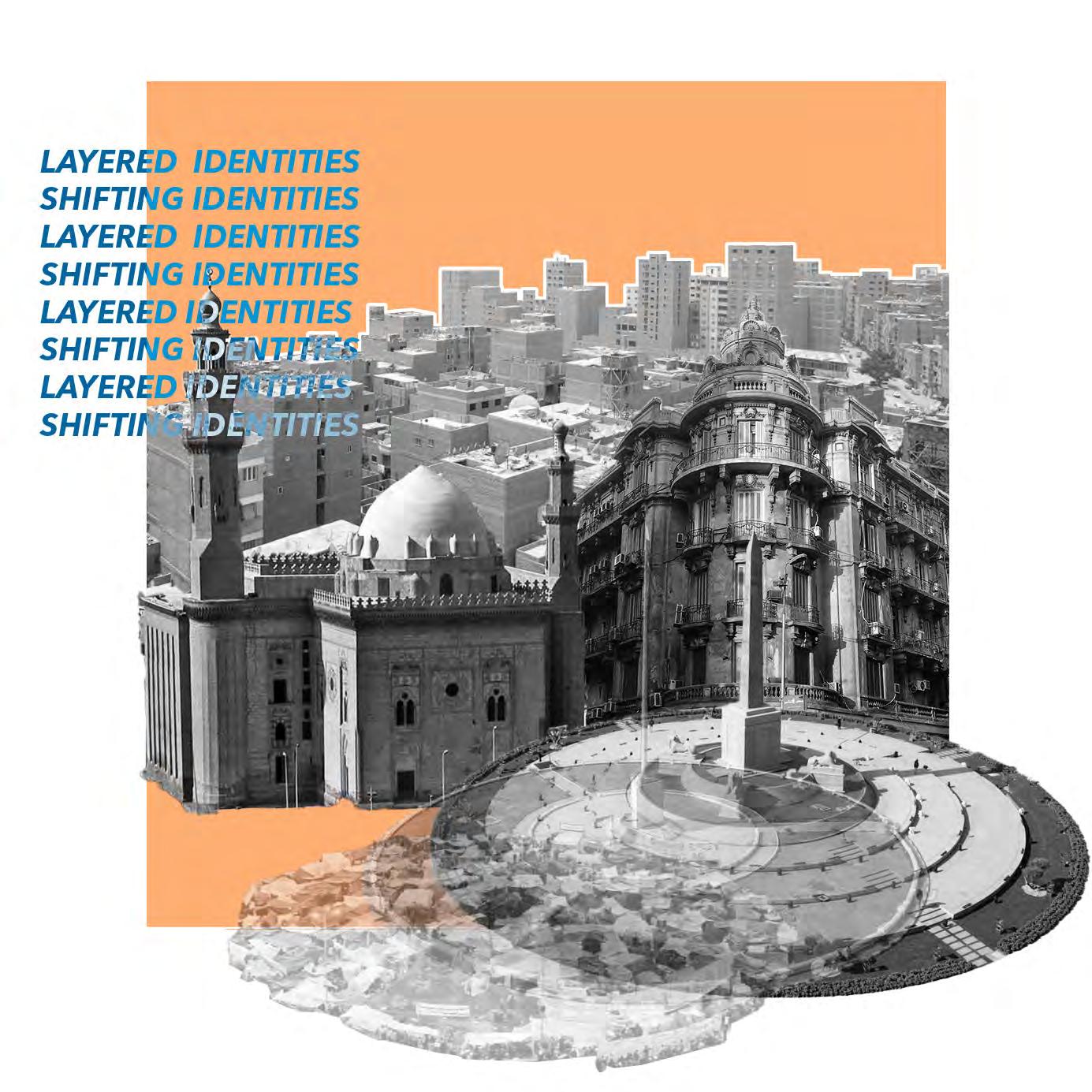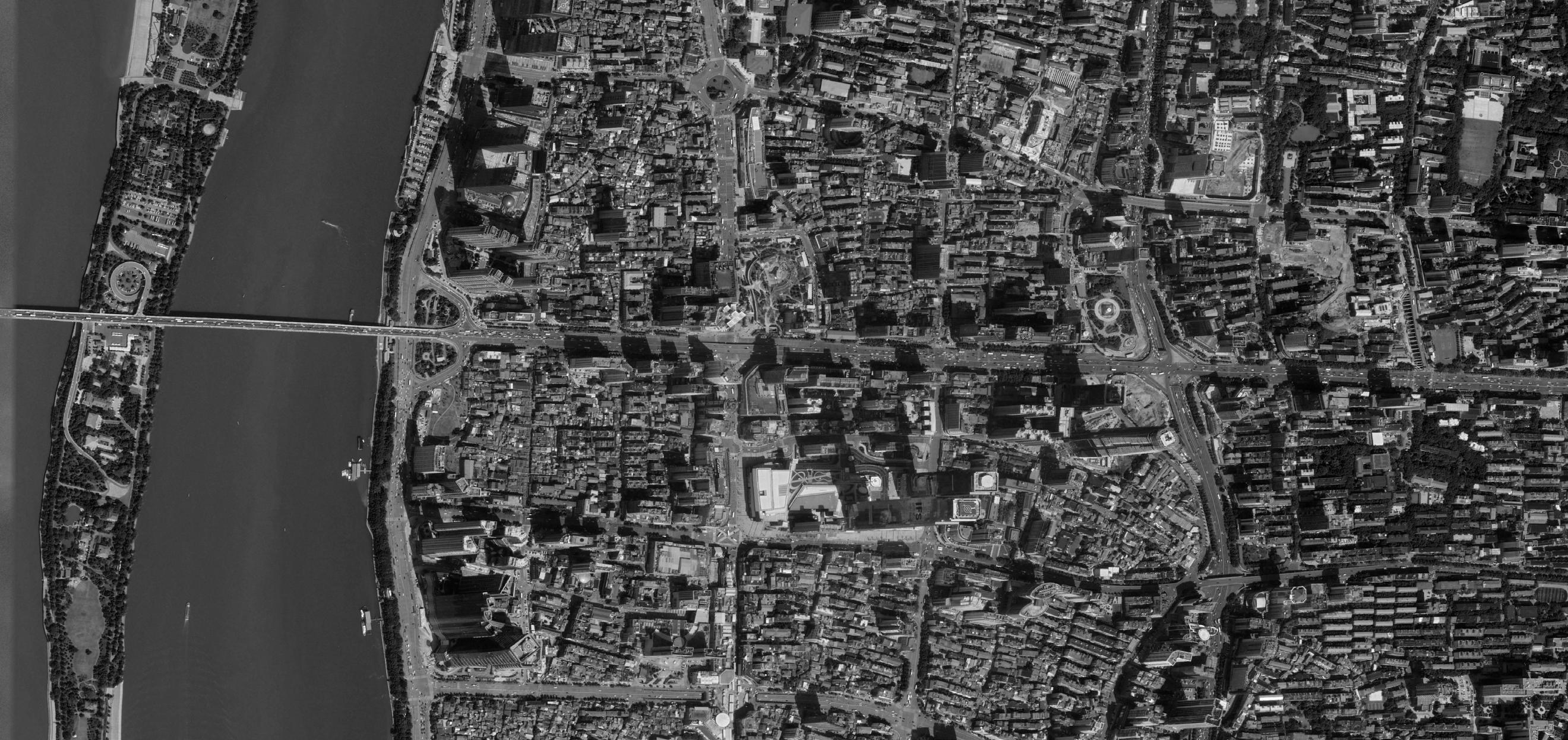
4 minute read
IDENTITY CONSTRUCTION: POWER DYNAMICS & URBAN FORM IN CAIRO
KHALID ABURAJAB ALTAMIMI
The expression of cultural identity is one of the key contributions of the urban designer in the transformation of the built environment. Francis Violich illustrates that “in homogeneous cultures, patterns of values and behavior provide established ways of living, well-related to environmental form”.1 As such,The urban environment can and is being used as a tool to reflect, impose or construct an identity
Yet, in the case of the Arab city, the question of identity is further complicated by the complex layered histories that have shaped the built environment over centuries. Navigating the context of Cairo specifically, those layers include a postcolonial legacy still under redefinition. Like in many other Arab cities, the question of Arab Egyptian identity is central to the new physical shifts the city is experiencing. A vision of progress coupled with a desire to attract global investment2 requires a careful reformulation of socio-spatial structures, value systems, and cultural norms.
Through legislation, initiatives, visions and media, the map of Cairo has been evolving and in constant flux between its people and the government, making it a city of dualities and competing identities, especially with the power dynamics reshaping the built form that imply the making of new identities. By tracing the intersecting layers of identity overtime, power relationships are uncovered. The colonial era imported foreign forms of planning and architecture that embraced Western thought superiority-still held to this day.3 The recent refashioning of public spaces, especially liberation square, the center of the 2011 revolution4 is also building new meanings and publics. These can be coupled with the demolition of informal settlements5, a subcultural form that makes up over half of Cairo’s urban environment6, to make way for modern large-scale developments are the tools in the identity [re]construction process resulting from the shifting power dynamics.
Understanding the influence designers exert while shaping future visions of the urban environment is imperative to the profession. Acknowledging this power, and our ability to produce and reproduce urban imaginaries and shape public perception gives us agency in the struggle to retain multicultural, locally grounded interventions. In reshaping Arab and national identities, the production of regionally grounded urban forms becomes central in cultivating meaning and confronting the banality and indifferenciation fueled by global capital.
Keywords
Postcolonial, Informal, Power, Arab Urbanism, Identity.
Urbanisms
Social Urbanism, Everday Urbanism, Informal Urbanism, Postcolonial Urbanism, Postcity Urbanism, Instant Urbanism.
Notes
1. Francis Violich, “The Search for Cultural Identity through Urban Design: The Case of Berkeley,” Berkeley Planning Journal 2, no. 1 (July 31, 2012), https://doi.org/10.5070/bp32113202.
2. Marc Angelil et al., Housing Cairo - the Informal Response (Berlin: Ruby Press, 2016).
3. Edward W Said, Orientalism (New York: Vintage Books, 1978).
4. Hamza Hendawi, “Cairo’s Historic Tahrir Square Is Being Transformed” The National, May 15, 2020, https://www.thenationalnews.com/ world/mena/cairo-s-historic-tahrir-square-isbeing-transformed-1.1019375.
5. Egypt Today staff. “136 Families Are Being Moved to Egypt’s Asmarat Alternative Housing Neighborhood.” EgyptToday, January 12, 2021. https://www.egypttoday.com/ Article/1/96344/136-families-are-being-movedto-Egypt-s-Asmarat-alternative.
6. Marc Angelil et al., Housing Cairo - the Informal Response (Berlin: Ruby Press, 2016).

With the prevalence of social media, the majority of people prefer to dine at a remote but instagrammable enough restaurant rather than a nearby but not instagrammable enough one. In instagrammable spots, users focus more on the shareability of the experience in the online space shaped by social media, rather than the experience of the space itself.1 On one hand, instagrammable spots often attract excess consumers or visitors. Due to the limit of internal space, excess visitors are forced to occupy public spaces for waiting, most often street spaces. They not only limit the right of local residents to use public spaces but also affect their daily experience. This has led to a debate about the occupation of public space by private commercial space. On the other hand, instagrammable spots shape consumption behaviors that actually stifle the creative use of public space by the masses.2 They are usually purposeful and singleminded, known as the “ Visit-Share-Leave” mode.3 They do not pay attention to the urban environment around instagrammable spots and ignore the various daily activities that are constantly taking place there. This has to a certain extent exacerbated the problem of uneven use of spatial resources.4
Based on this urban phenomenon, this paper will take Modern China Tea (hereinafter referred to as MCT), one of the most typical instagrammable spots in China, as the research object, and take Wuyi Square in Changsha City as the research area, and conduct an in-depth analysis in three parts. First, this paper will explain the phenomenon through the theoretical knowledge of Lefebvre’s critique of everyday life, Debord’s The Society of the spectacle, everyday urbanism, and digital urbanism. Secondly, this essay will analyze the spatial patterns of MCT and instagrammable consumer behavior patterns, simulating the impact of tourists on the public space in MCT at different times. Thirdly, this essay will combine two case studies, Superwenheyou in Changsha and Unhashtag Movement in Vienna, to propose some optimization strategies for this phenomenon through an urban design lens.
In the age of social media, the appearance of instagrammable spaces often signals the success of an urban design project.5 However, it is essential for urban designers to be aware of the advantages and limitations of instagrammable spaces. Through a specific instagrammable phenomenon, this paper attempts to reveal the possibilities of such advantages and limitations from theory to practice, providing a strong reference for current and future urban design practice.

Keywords
Instagrammable Spots, Mordern China Tea, Social Media, Public Space.
Urbanisms
Digital Urbanism, Everyday Urbanism.
Notes
1. Irma Arts, ANke Fischer, The Instagrammable outdoors – Investigating the sharing of nature experiences through visual social media, 2021,https://besjournals.onlinelibrary.wiley.com/ doi/full/10.1002/pan3.10239
2. Yibin Zhang, Criticism of daily life and revolution of daily life -- similarities and differences between Lefebvre and Debo’s critical theory of daily life, 2020 https://ptext.nju.edu.cn/ a0/51/c13367a499793/page.htm
3. Kai Zhou, Haitao Zhang, Yining Xia, Chong Li, Urban Consumer Space Under the Influence of Social Media: take Xiaohongshu in Changsha as an example, Modern Urban Studies (2021): 20-27
4. Seunghun Shin, Zheng Xiang, Social MediaInduced Tourism: A Conceptual Framework, e-Review of Tourism Resear, Vol. 17 No.4, 2019
5. Fabiola Fiocco, Giulia Pistone, Good Content vs Good Architecture: Where Does ‘Instagrammability’ Take Us? 2020 https://www. archdaily.com/941351/good-content-vs-goodarchitecture-where-does-instagrammability-takeus?ad_medium=widget&ad_name=relatedarticle&ad_content=954080











